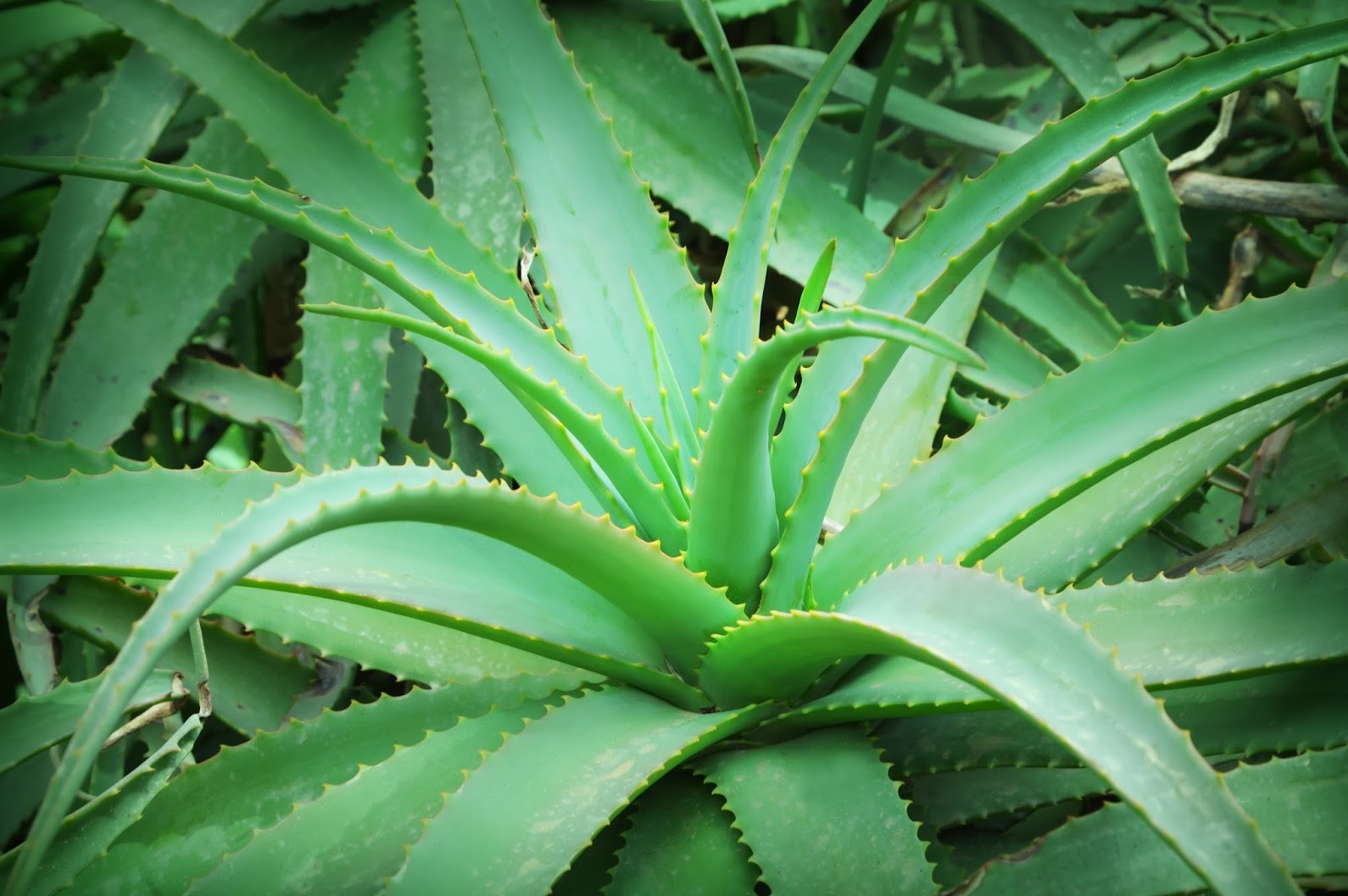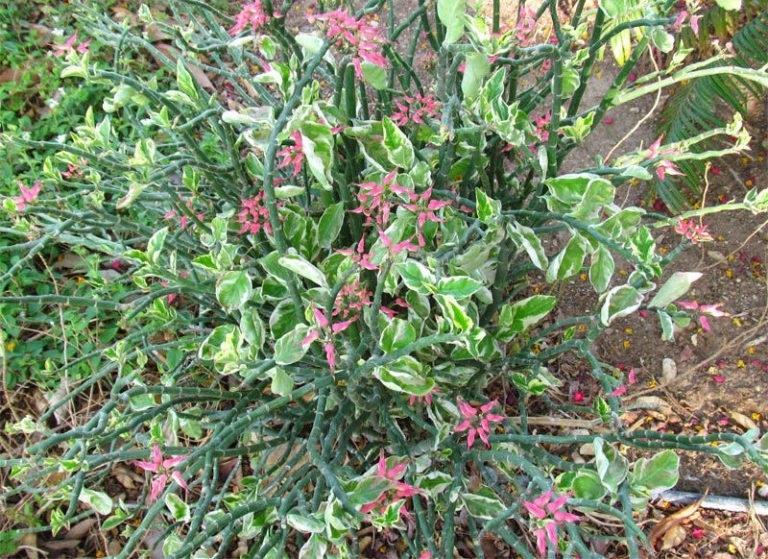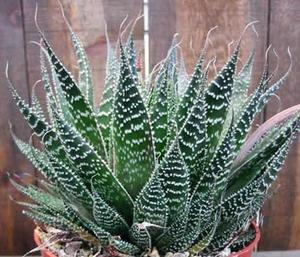Aloe vera has recently become very popular and can be grown at home. It not only looks very beautiful, but also has healing properties. This quality has been noticed for this plant for a very long time. This succulent is valued as a source of phytoncides that disinfect the air.
In addition, its leaves are used not only in folk medicine, but also in traditional medicine, as well as in cosmetology. Therefore, for this plant to be beneficial, it is necessary to properly grow and care for it.
Content
Plant characteristic
Homeland of aloe vera - Central Africa, but now it has spread all over the world. It is completely indifferent to the composition of the soil and can even grow on volcanic ash. For medicinal purposes, its breeding is carried out on special plantations.
Aloe blooms in small tubes in the form of tubes, which are collected in a brush. In natural conditions, flowering occurs once every 2-3 years, but at home it happens very rarely - once every 10-15, or even 20 years, mainly in spring and summer.
How to grow and care for aloe?
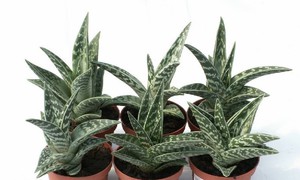 Home care for this plant does not present any difficulties. It adapts well to various conditions. In order for a succulent to grow well, it must provide the following conditions:
Home care for this plant does not present any difficulties. It adapts well to various conditions. In order for a succulent to grow well, it must provide the following conditions:
- good lighting;
- optimal temperature conditions;
- correct watering;
- top dressing.
Let's examine them in more detail.
Planting and lighting
Before planting aloe, you need to prepare a container for it. This should be a ceramic pot, because clay absorbs excess moisture well. A high drain should be put in itso that moisture does not stagnate. Since this plant is rather unstable and often falls to the side, it should be fixed as best as possible when planting. For this purpose, several pebbles are placed in the container and pressed tightly against the base of the aloe. This helps him to grow straight.
Caring for this medicinal plant involves applying the right lighting. It loves the sun very much, therefore it is recommended to keep it on windows facing south or southeast. With a lack of light, it begins to stretch, and in the winter use additional lighting. In the spring, when the sun begins to bake more and more, the plant should first be shaded to avoid burns. This should be done for about a week, using tulle or gauze for shading, filtering bright sunlight.
In summer, it must be taken out to an open balcony to obtain the required dose of ultraviolet radiation, which does not allow window glass to pass through. Thanks to this, the plant has a more powerful stem and thicker leaves.
Temperature and watering
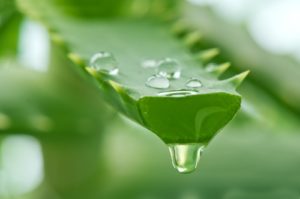 In summer, aloe vera can be kept at room temperature. If possible, you can take it to a terrace or balcony and put it in a place where it will not get rainfall and there will be no draft... In winter, the succulent is dormant and at this time it should be moved to a cool place with a temperature of +14 degrees.
In summer, aloe vera can be kept at room temperature. If possible, you can take it to a terrace or balcony and put it in a place where it will not get rainfall and there will be no draft... In winter, the succulent is dormant and at this time it should be moved to a cool place with a temperature of +14 degrees.
Caring for aloe at home includes proper watering, which should be moderate. This should be done as the topsoil dries out. As soon as cold weather sets in, watering is halved. The soil should always be slightly moistened. Water the plant in such a way that water does not get into the outlet with leaves, as this will cause rotting of the trunk.
Top dressing
This succulent needs additional feeding, which must be carried out from early spring to mid-autumn, taking a break until next spring. Usually mineral fertilizers are used for this.
Breeding methods for aloe vera
This plant reproduces in the following ways:
- seeds;
- apical shoots;
- cuttings;
- undergrowth.
 If seeds are used for reproduction, then this procedure should be carried out in early spring. Once they are ripe, they must be sown in small containers, which are filled with a soil mixture of turf, leafy soil and sand in a 1: 1: 2 ratio. As soon as seedlings will germinate and get stronger, they should be transplanted into another container with the same soil composition. A separate pot is used for each grown plant. To make the soil nutritious and friable, charcoal and brick chips are added to it.
If seeds are used for reproduction, then this procedure should be carried out in early spring. Once they are ripe, they must be sown in small containers, which are filled with a soil mixture of turf, leafy soil and sand in a 1: 1: 2 ratio. As soon as seedlings will germinate and get stronger, they should be transplanted into another container with the same soil composition. A separate pot is used for each grown plant. To make the soil nutritious and friable, charcoal and brick chips are added to it.
In the future, caring for young plants consists in moderate watering, carried out regularly. After a year, they are transplanted into more spacious containers. They are cared for in the same way as for adult specimens.
Propagation by cuttings is also a fairly effective method and can be carried out all year round, but it is preferable in spring and summer. Healthy and ripe shoots are cut into pieces 10 cm long and put in a shaded place to dry, and the cuts should be sprinkled with charcoal powder. The cuttings should be planted in well-moistened sand to a depth of 1–2 cm and 5 cm apart. When the first roots appear, it is necessary to increase the intensity of watering. After a week, the shoots are planted in a separate pot.
Many people prefer to propagate aloe at home using the apical cuttings and shoots formed at the base of the shoots. After cutting the cuttings, they should slightly tighten, then they are deepened into the soil substrate 2 cm and tied to a support. In the future, care should consist in ensuring the optimal temperature regime (+18 degrees) and regular spraying. After the cuttings are well rooted, they should be watered like mature plants.
How to plant aloe?
Sooner or later, this succulent must be planted so that it always looks good. For adult plants, this procedure should be carried out once every 3-4 years, for young plants - once every 2 years. It is necessary to plant aloe in a larger pot, on the bottom of which drainage is laid and the substrate is poured on top. Then, the succulent is gently shaken out of the old pot, and the soil is carefully cleaned from the root. Very carefully, the plant is placed in a prepared pot, covering the root system with a substrate.
What problems can arise when growing?
 At home, growing aloe can be accompanied by various problems and most often they arise due to improper care.
At home, growing aloe can be accompanied by various problems and most often they arise due to improper care.
If the plant is moisturized too much, then its leaves will become pale and lethargic after a while. The stem and root system may also begin to rot. The flooded flower follows transplant into a new pot with dry soil, before that, carefully examining its roots and removing the rotten ones.
Due to the lack of sunlight, aloe can grow sharply, which makes it look very ugly. It is necessary to compensate for the lack of lighting with artificial light lamps.
At low air humidity, the leaves at the tips turn brown. Although this plant does not react at all to changes in such an indicator, the room should be regularly ventilated.
Flower does not like drafts and does not tolerate low temperatures... During ventilation, it must be protected from this.
In addition to these problems, aloe at home can infect various pests, such as:
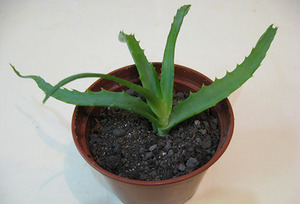 mealybug;
mealybug;- false shield;
- aphid;
- shield.
Various chemicals are used to combat them.
The shield can be removed with a cloth soaked in alcohol. Then, aloe is irrigated with an insecticide. The main thing is notice in time that dark brown spots have formed on the upper side of the sheet.
If a spider mite appears, the succulent must be taken out to fresh air or the room must be thoroughly ventilated. An insecticide is also often used.
 Such a fleeting disease as dry rot does not manifest itself at all. The affected plant begins to dry out from the inside and it is impossible to save it. Proper care, well-chosen soil and good drainage help prevent its formation.
Such a fleeting disease as dry rot does not manifest itself at all. The affected plant begins to dry out from the inside and it is impossible to save it. Proper care, well-chosen soil and good drainage help prevent its formation.
Thus, we found out that aloe vera is a rather unpretentious plant, the care and cultivation of which is not difficult. But at the same time you need to adhere to certain rules, pay attention in a timely manner to the change in the appearance of such a flower to identify diseases and possible pests.
